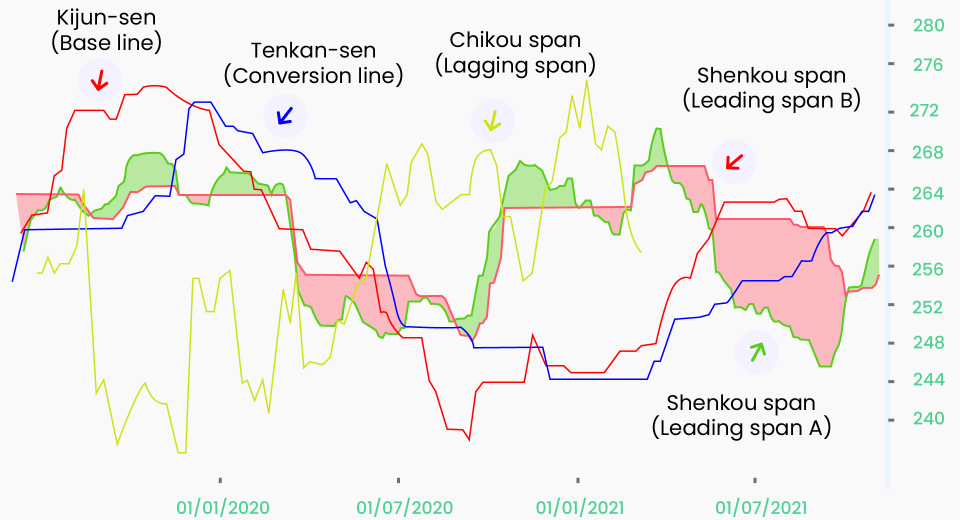Why Banking Stocks Tumbled Despite Upbeat Q1 2023 Results

Citigroup beat the Q1 2023 profit estimates, which pushed its share price higher. JPMorgan Chase’s stock also climbed an impressive 7% after the release of its quarterly report. However, the banking sector was weighed down by the poor performance of regional banks. Here’s a detailed look at why banking stocks tumbled despite upbeat results from major banks.
Imbalanced Assets and Liabilities
A bank relies on the balance between its assets and liabilities to thrive. A healthy asset portfolio, with a mix of long and short-dated securities, loans and free cash, is required to ensure financial stability. Cash includes the currency held in bank vaults, pending collections and account balances from customers and other banks.
In the beginning of 2023, treasuries formed the largest chunk of bank assets. However, loans are usually the largest asset category because they help with the interest revenues. Also, loans to a diverse clientele helps maintain the stability of capital inflow from multiple directions. Liabilities, on the other hand, are the obligations that a bank must fulfil, including borrowings and customer deposits.
This imbalance led to bank failures in 2023. the banking sector had highly concentrated liabilities. Banks were uninsured and had short-term deposits. This meant they could be withdrawn at any time, which the customers actually did. On the other hand, declining interest rates meant a loss of value of assets linked to interest rates. This led to customers looking for investments with better returns, which drove the withdrawals.
Conversely, banking assets were concentrated in treasuries and mortgage-back securities, which are long-term deposits. Their value declined when the interest rate hikes began.
This clear mismatch in the asset and liability durations was overlooked both by banks and regulators. The risk for the banks was within permitted limits but was concentrated heavily in a single sector. SVB, for instance, lent out mostly to tech start-ups. In 2022, heavy interest rate hikes affected tech earnings. The tech sector, despite performing well, could not book the expected profits due to higher interest rates.
Further, due to rate hikes and inflation, the value of bonds that banks owned declined. SVB’s liabilities had increased while its assets were not paying back. It is critical for banks to maintain a balance between their assets and liabilities to be able to fulfil their obligations. This is where SVB failed.
Depositors were within their rights in seeking to withdraw their deposits; a request that SVB could not fulfil. About $42 billion was withdrawn from the bank within 48 hours. Can a bank really fulfil that kind of commitment in such a short span? Not really, since the bank’s assets were not compatible with the kind of risk it had taken.
Credit Suisse had very different reasons for failure. The bank had registered multiple scandals in the past decade. Despite having a comfortable balance sheet, the bank suffered at the hands of employees who had been involved in corruption, tax evasion, money laundering and even corporate espionage scandals. Since the bank’s reputation was already scarred, a report that one of the banks was “on the brink” made investors believe it was Credit Suisse and depositors withdrew SFr100 billion, causing Credit Suisse’s share price to drop. On March 14, 2023, the bank announced a “material weakness” in its reporting for 2021 and 2022. This was the time US banks were failing and that was enough to spread paranoia across the EU.
These events were enough to make investors and the public lose faith in the banking system.
Fears of an Unstable Banking Sector
Fear is a powerful emotion. It drives trading decisions and the sector’s instability affected trader sentiment. Depositors fled from smaller regional banks to larger global ones, as a precautionary move.
Announcements from banks like PacWest Bancorp of entering into talks with investors and partners have deepened the fear, hinting at a worsening crisis for the sector. The push from the US to raise the debt ceiling is strengthening the notion of continued economic instability across the US. Any debt default by America is bound to shake the global economy. Negative sentiment, especially for regional banks, is weighing heavily on the banking sector. Claims by US Treasury Secretary Yellen that more bank mergers would be necessary have further deepened the fear among depositors.
A Fed survey in May 2023 revealed that increasing cost of capital may dampen investments. Tightening lending conditions may help the growth of the US economy, although it will remain below 1%. The banking sector is fragile for now, with suspicions of deposit flight for more banks. This is especially true for regional banks, with larger uninsured deposits and less diversified investments.
The banking crisis led traders to trade on fear and the momentum drove short sellers. Trading strategies transitioned from looking at bank fundamentals to trading the news and the fear it created in the market. The fear was heightened when First Republic Bank announced insolvency. Plus, the failure of the Fed to save the bank, despite regulatory intervention, further pushed traders away from the sector. Also, expectations of another interest rate hike in June increase further hit trader sentiment, causing volatility in stock prices in the sector.
What Does This Mean for the Banking Sector?
The fastest rate hike spree and long-dated held-to-maturity securities, combined with depositor fears of moving capital above $250,000, led to banking turmoil.
A breakdown of the banks’ deposit growth shows that banks that grew fast with deposits were the first ones to decline. Despite the Fed’s attempts to prevent bank failures from spiralling, depositors remained concerned about their money and continued to withdraw from regional banks.
But the sharp decline in stock values also give an opportunity to buy the dip. One lesson the sector’s turmoil has taught is risk management, which traders must also ensure while planning their trades.
To Sum Up
- SVB failed because of the mismatched duration of liabilities and assets.
- Credit Suisse failed due to its history of scams, which hurt investor sentiment.
- Failure of major banks hurt investor sentiment and made way for fear trading.
- Rampant fear drove traders to go short on the banking sector.
Disclaimer:
All data, information and materials are published and provided “as is” solely for informational purposes only, and is not intended nor should be considered, in any way, as investment advice, recommendations, and/or suggestions for performing any actions with financial instruments. The information and opinions presented do not take into account any particular individual’s investment objectives, financial situation or needs, and hence does not constitute as an advice or a recommendation with respect to any investment product. All investors should seek advice from certified financial advisors based on their unique situation before making any investment decisions in accordance to their personal risk appetite. Blackwell Global endeavours to ensure that the information provided is complete and correct, but make no representation as to the actuality, accuracy or completeness of the information. Information, data and opinions may change without notice and Blackwell Global is not obliged to update on the changes. The opinions and views expressed are solely those of the authors and analysts and do not necessarily represent that of Blackwell Global or its management, shareholders, and affiliates. Any projections or views of the market provided may not prove to be accurate. Past performance is not necessarily an indicative of future performance. Blackwell Global assumes no liability for any loss arising directly or indirectly from use of or reliance on such information herein contained. Reproduction of this information, in whole or in part, is not permitted.




